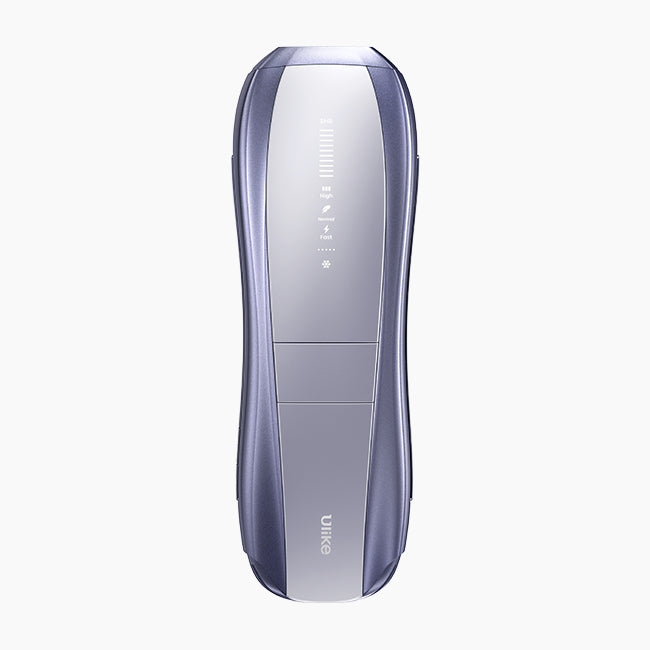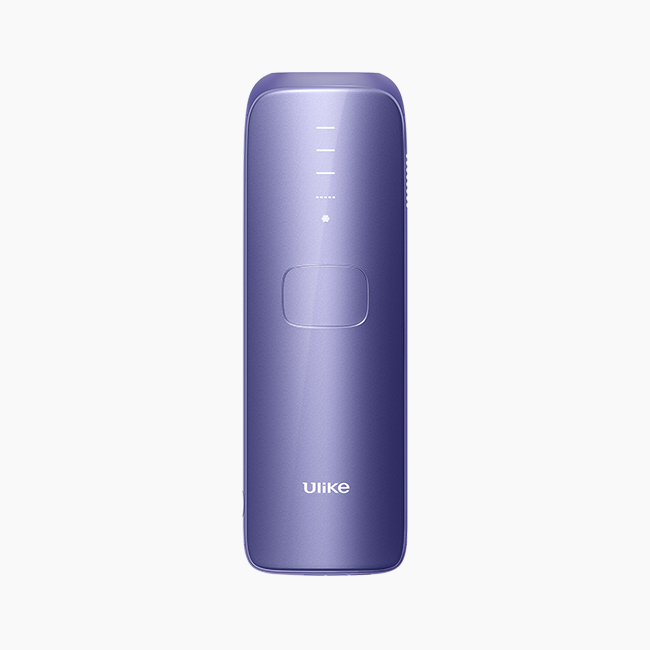
People who get ingrown hair after every session of shaving or unsatisfactory epilation are well aware of the pain, frustration, and irritation caused by them. They lead to bumps caused by the incompletely removed hair strands. So, it not only gives you excruciating pain but also looks disgusting and can cause infection if not dealt with on time.
However, contrary to what most people assume, simply tweezing them does not treat them, rather it damages the skin. Therefore, are you looking for the ultimate solution to this problem and wondering if laser hair removal actually gets rid of ingrown hair? Let us find out all about it in this article.
Table of Contents:
-
- Part 1: What is Ingrown Hair?
- Part 2: 8 Causes of Ingrown Hair
- Part 3: Will Laser Hair Removal Get Rid of Ingrown Hair?
- Part 4: Does Laser Hair Removal Cause Ingrown Hairs?
- Part 5: Tips for Minimizing Ingrown Hairs After Laser Hair Removal
- Part 6: The Takeaway
What is Ingrown Hair?

An ingrown hair, also medically known as pseudofolliculitis barbae, is hair that doesn’t sprout out of the skin curls back, and grows inside its superficial layer. Consequently, a pimple-like bump forms that sometimes gets filled with pus. Usually, it stays closed while encasing the hair.
However, sometimes the curled hair strand can also poke out of it. This bump irritates, and in most cases, causes pain. It also leaves a mark even if it heals.
Ingrown hairs can form on any part of the body. However, they are more common on the chin, legs, underarms, chest, and pubic area. This is because the clothes cause more friction in these areas of the body.
Regardless of where you have ingrown hairs, it is mandatory to treat them for several reasons. First, these hairs constantly cause irritation, redness, swelling, discomfort, and pain. Moreover, these pierce the skin’s surface and result in long-term damage and scarring.
8 Causes of Ingrown Hair
There can be several causes of developing ingrown hair on your face or body. Some of the common ones are given as:
1. Shaving

Shaving is the top cause of ingrown hairs as it cuts the hair strand instead of removing it completely. Furthermore, a majority of people shave in the opposite direction of hair growth to get a close shave. Consequently, there is the cutting of the hair below the surface of the skin and its trapping within.
2. Waxing and tweezing
Just like shaving, other traditional hair removal methods like waxing or tweezing can be a primary cause of ingrown hair as well. Such methods, when inappropriately practiced break the hair off underneath the skin’s surface, resulting in the hair curling inside when growing back again.
3 Thick curly hair
Ingrown hair is naturally common in people who have thick and curly hair. This is because thick, coarse, or curly hair has a higher tendency to bend backward when growing after its removal.
4. Tight clothing

Tight clothing is an easily avoidable cause of ingrown hair. This is due to the constant friction against the skin, which compresses the skin’s surface and traps hair strands while making it curl backward.
5. Dead skin cells
Lack of exfoliation can result in the accumulation of dead skin and impurities on the skin’s surface. As a result, the pores clog and block new hair growing outwards causing them to become ingrown.
6. Improper grooming tools
The use of old and dull razors or poor waxing techniques often causes the breakage of hair under the skin rather than cutting or pulling it cleanly. This can make newly grown hair grow inside the skin instead of emerging out of the skin’s surface.
7. Skin conditions
Many skin conditions and diseases can result in ingrown hairs and strawberry legs as well. The most common of these are strawberry legs and keratosis pilaris.
8. Hormones
A rare cause of ingrown hairs is hormonal changes that occur during pregnancy, puberty, or menopause. These hormones affect the hair growth patterns which leads to an increased risk of ingrown hair.
Will Laser Hair Removal Get Rid of Ingrown Hair?

Laser hair removal is one of the best and most long-lasting solutions to recurrent ingrown hairs. The laser treatment works effectively for all parts of the body by directly targeting the hair follicles. This minimizes hair growth and reduces the chances of new hair growing and curling inside the skin’s surface.
It is safe to say that laser hair removal is the only actually successful method to get rid of ingrown hairs. This is based on the working principle laser – it targets the source of the issue directly, i.e., the root of the hair, and burns it. So, it destroys the hair follicle completely, removing any chances of the same hair growing back.
As the entire treatment can require 6-8 sessions, the hair follicle shrinks with each session, making the new hair grow thinner and lighter and eventually disappear in most cases. This eliminates the risk of any hair strand curling back into the skin surface and causing ingrown hairs.
However, it is important to note that contrary to what most believe, the laser doesn’t provide long-lasting and complete removal of hair. Still, it does reduce the overall growth by 70 to 90%, without any repercussions. This makes laser hair removal one of the best and most effective treatments for reducing excessive hair growth, as well as getting rid of ingrown hairs.
Does Laser Hair Removal Cause Ingrown Hairs?
The simple answer is no. Laser hair removal does not result in ingrown hairs. This is because it works by destroying the hair follicle completely. As there is no source for the hair to grow again, there are no risks of it becoming an ingrown one. Furthermore, there are multiple reasons why laser hair removal does not cause ingrown hair in comparison to other common hair removal methods like waxing or shaving. These reasons are given below.
- Targeted hair removal: Laser targets the hair follicles directly, burning them to ensure complete damage and thus reduction of hair growth. Since the hair follicle is destroyed, there is no risk of it curling back or trapping inside the skin surface.
- No blunt cuts: As the laser burns the hair in contrast to cutting it like shaving, there are no edges left of the hair that could grow back in abnormal directions and cause ingrown hairs.
- Reduced folliculitis risk: Folliculitis occurs when the hair follicle becomes inflamed resulting in ingrown hairs. Unlike waxing or shaving, the laser doesn’t pull or cut the hair, thus reducing the risk of any inflammation or infection.
Nevertheless, studies suggest that laser hair removal can cause temporary inflammation due to skin sensitivity. Moreover, this method can lead to redness and bumps that could resemble the signs of ingrown hairs.
Tips for Minimizing Ingrown Hairs After Laser Hair Removal
Exfoliate regularly
It is recommended to exfoliate your skin using a gentle exfoliating agent in target treatment areas to help get rid of any accumulating dead skin cells and hence prevent hair strands from being trapped under the skin’s surface.
Moisturize

Keeping your skin well-moisturized, nourished, and hydrated is also an important step that ensures that your skin stays healthy. There is reduced irritation in soft and moisturized skin. So, there are fewer chances of ingrown hair.
Avoid tight clothing
Tight clothes irritate the skin causing ingrown hair. Thus, wearing loose-fitting and airy clothes doesn’t produce friction, allowing your skin to breathe freely while preventing ingrown hair.
Follow aftercare instructions
Whether it is shaving, waxing, or laser hair removal, it is important to follow proper instructions and procedures to avoid ingrown hair. So, openly talk to your doctor about the follow-up and after-care routine of laser hair removal.
The Takeaway

Laser hair treatment has been proven as an efficient hair removal method that helps get rid of ingrown hairs by burning the follicles. It offers a safer and more effective option for removing hair compared to traditional methods. This is because laser beams directly target the hair follicle and destroy it while minimizing the chances of new hair growth. Also, the hair that grows is fine, straight, and thin. Therefore, the changes of ingrown hair are almost close to none after laser hair removal.
Furthermore, the latest at-home laser hair removal technology has enabled people to have the freedom to get professional laser treatments in the comfort of their own homes at an affordable price.
So, devices such as the Ulike Sapphire Air3 IPL Hair Removal Handset offer a secure, skin-friendly, long-lasting, salon-like, and cost-effective hair removal method for effectively eliminating ingrown hairs and helping you avoid the hassle of having your laser treatment done at a clinic.












































